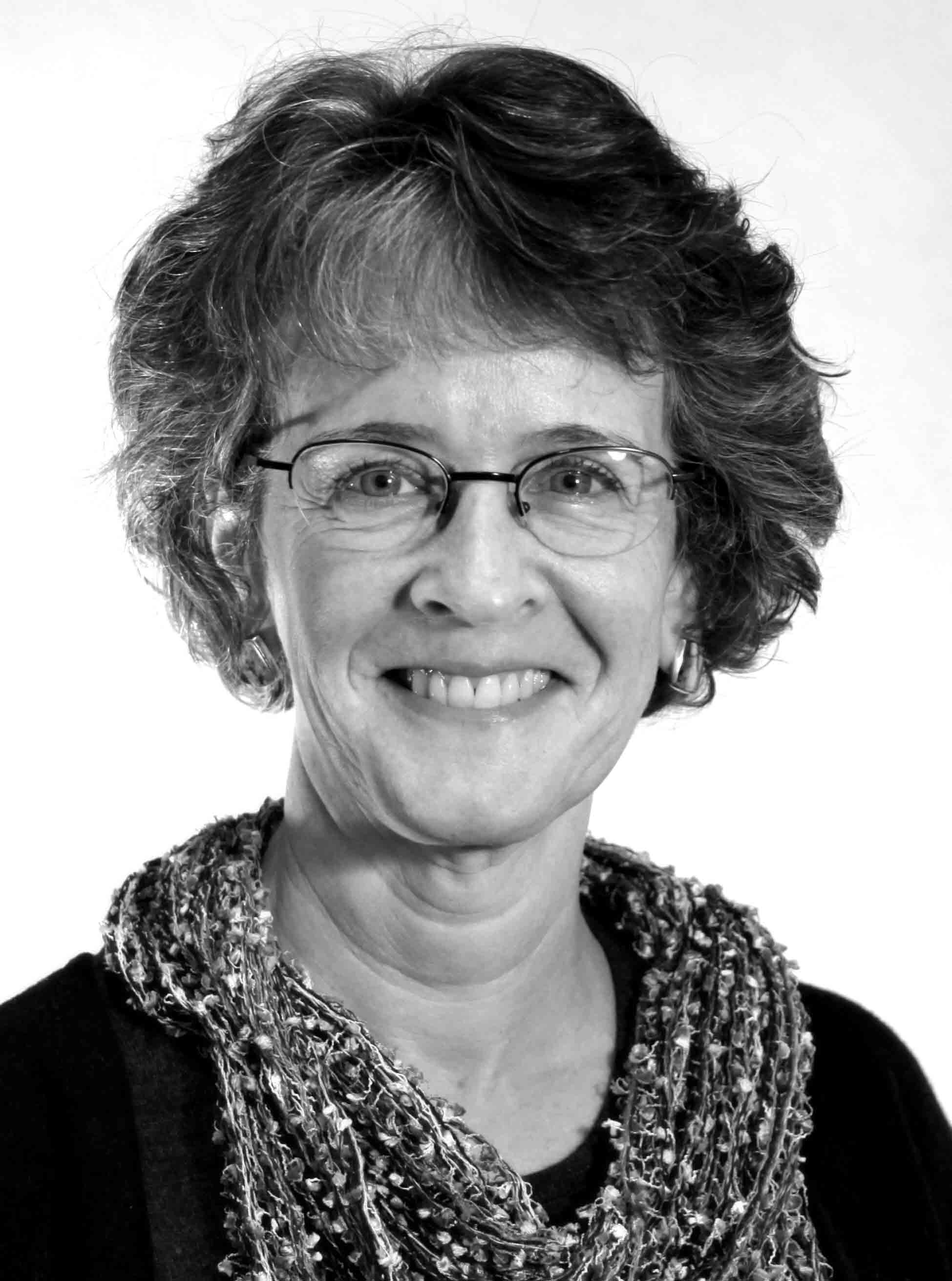
by Heather Vickery | Dec 16, 2015 | Nicaragua
Nicaragua is one of the most beautiful places I’ve ever been – stunning landscapes of mountains, beaches, jungles, and patch-worked small farms sweep up and down the hillsides everywhere.
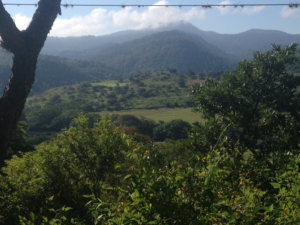
The mountains surrounding Matagalpa
But most beautiful to me is the spirit of the Nicaraguan people: though I know all the perils of generalizations, I have found them to be exceptionally generous with strangers, deeply determined around issues of social justice, and infused with a wicked sense of humor.
I lived in Nicaragua for six months in 1984-85, working with Witness for Peace to try to end the U.S.-supported Contra war, and as part of that effort returned several time for shorter stays. But last week was my first visit in over 25 years, as I worked to set up new partner relationships in preparation for our first delegation May 21-28, 2016: https://uucsj.org/journeys/nicaragua/.
In a collaboration with Equal Exchange, we have developed a remarkable opportunity for U.S. citizens to learn about economic justice in the face of looming climate change, and to ask with us the larger question: What does solidarity between our countries look like at this particular moment of history?
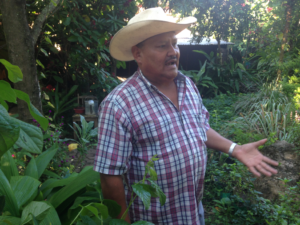
Augusto Cabrillo Obregon, a campesino near Esteli, describes the impact of climate change on his farm.
In the course of one short week, I met with over a dozen organizations: fair trade cooperatives, women’s empowerment collectives, human rights organizations and environmental justice groups. I witnessed the ways climate change is already drastically impacting coffee farms, and the measures that organic cooperatives are taking to try to survive. I heard the stories of impassioned campesina women as they told me about the connections they have learned to see between violence against women and violence against the earth. Courageous human rights workers told me about the deepening crisis they see in the corruption of their government and its many alliances with big business. And in the mountains around Matagalpa, I heard of the struggle against a new goldmine that would destroy the watershed of the Yaoska River.
I am excited to be part of this new program, linking justice activists to one another across distance and culture, across decades of colonial violence and more recent economic violence, in exploration and discernment together. What does solidarity look like, in this moment of history? Join us for the journey, and help us find out!
This blog post was written by Rev. Kathleen McTigue, Director at the UU College of Social Justice (UUCSJ).
by Heather Vickery | Dec 8, 2015 | Congregational Trip, Immigration
This post was written by Pat Caren from the UU Fellowship of Marion County Borderlinks trip in November 2015.
To cross a desert on foot is to risk your life. In Cochise County, Arizona, more than 260 people have perished this way since 2009. Every Tuesday evening in the border town of Douglas, the Healing Our Borders Prayer Vigil is held in remembrance of those and thousands of others who have died. In November, I participated in this moving experience, one of a delegation of fifteen from the Unitarian Universalist College of Social Justice.
Presbyterian minister Mark Adams led the vigil. Other participants included a group of Presbyterian Youth and other human rights workers and concerned individuals. We loaded 260 or so white wooden crosses into a shopping cart. Each took three and we lined up along the street that leads to the Mexican border. Most crosses bore a name and dates of birth and death.
Beginning with Pastor Mark, each held up a cross and spoke the name on it. Everyone else said, “Presente!” Then the cross was laid against the curb and its holder moved to the end of the line. Down the street we progressed. When my turn came, I did my best to pronounce the name. Everyone echoed, “Presente!” As we set down our last cross, we took another from the cart and continued, announcing names, “Presente,” laying them down.
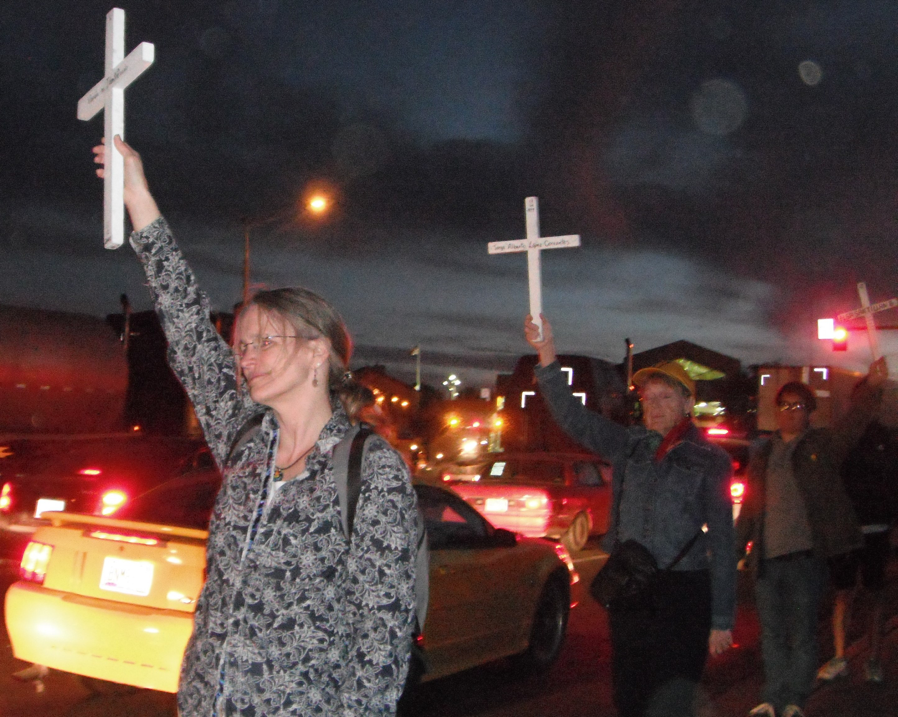
One of mine had no name, only “Mujer no identificada.” Who was she? Certainly someone’s daughter, probably someone’s sister. If married, where was her husband? Represented by another cross? Or did he survive to go on, unable to report her death or claim her body? Did she have children? Were they waiting for her to join them in the US or did she leave them behind to find work so she could feed them?
And why, oh why, do we not know her name? Were her remains so scattered that no clothing, papers, or possessions could be traced to her?
After the last cross, save three, had been laid down, we gathered in a circle. One by one, Pastor Mark announced two more names and another unknown, “Presente!” and he laid each cross in the center of our circle.
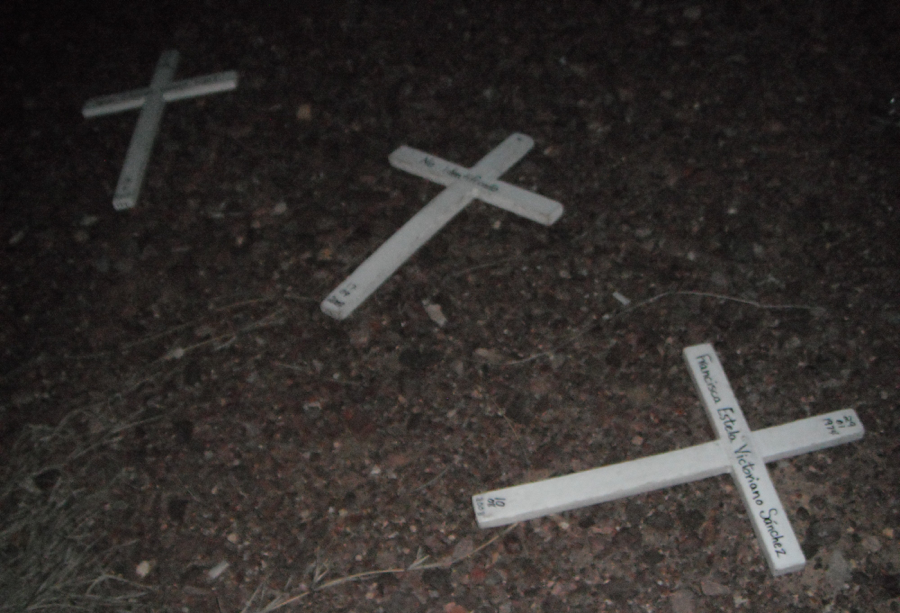
Standing in the night, listening to prayers for the families of the fallen and for both of our countries, remembering the dead and praying for a peaceful solution, I was struck by the tragedy of so many hopeful lives cut short.
Whatever you may think of those who were lost, about their motivations, their judgment—they were living, breathing souls, like you and me, with hopes and dreams, struggles and sorrows. Some died alone, some in the company of friends or loved ones. And even the unknowns, the No identificada, were loved and mourned by someone.
We returned to the parking lot, picking up the crosses as we went, mourning for our brothers and sisters, those children of God, whom we never met on this side of the border between life and death, but who had become real to our hearts.
Pat Caren is a member of the UU Fellowship of Gainesville, FL, where she volunteers on the Social Justice Committee and is a key coordinator for Family Promise, a program to help homeless and low-income families achieve sustainable independence.





